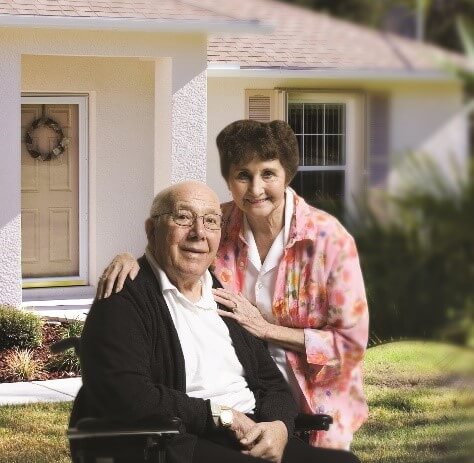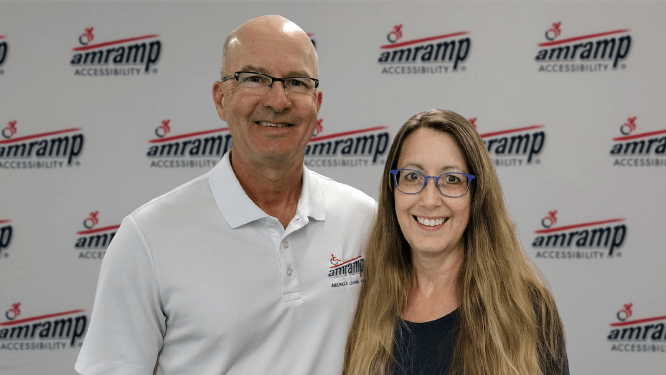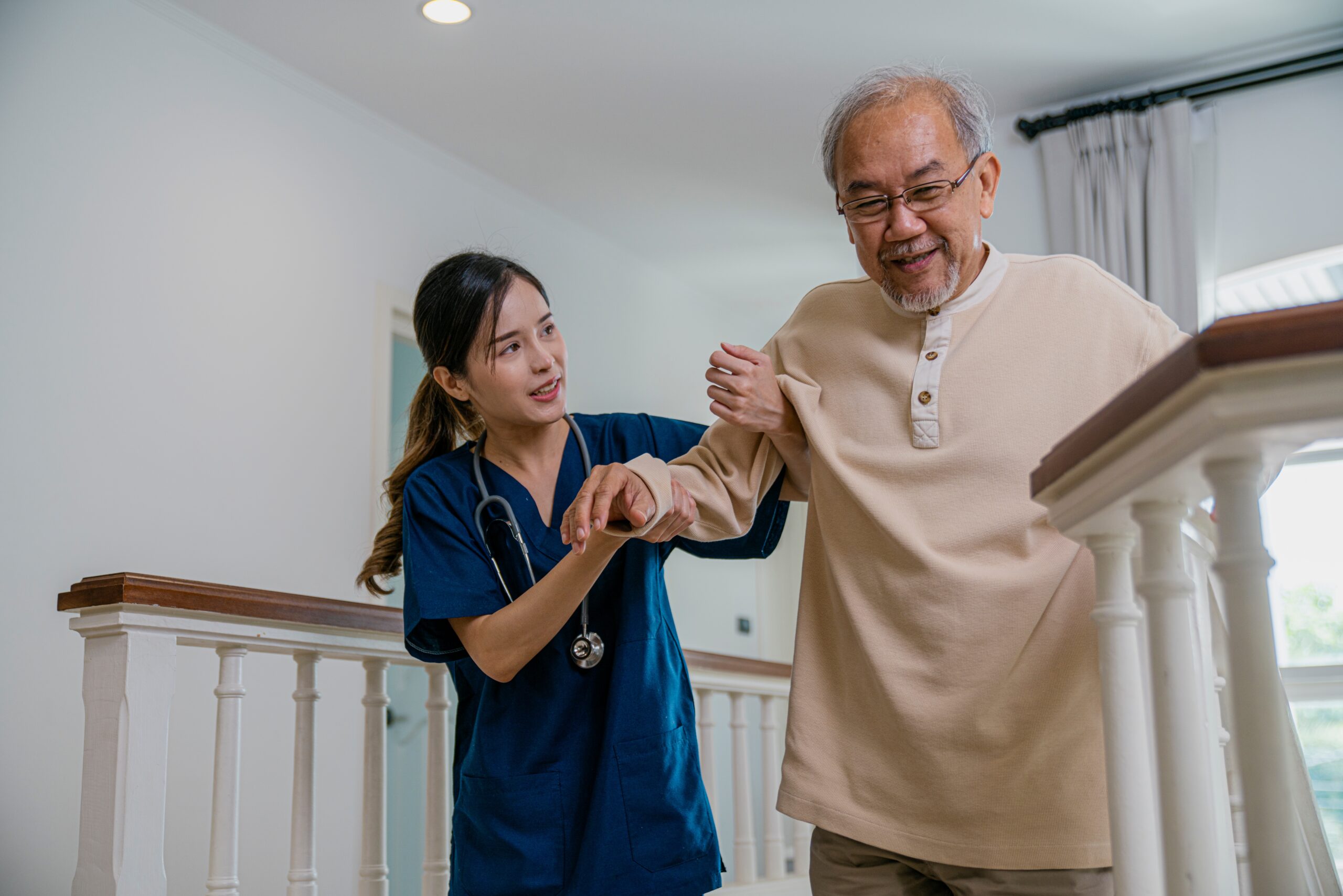Nearly 90 percent of surveyed seniors over age 65 want to stay in their current residence for as long as possible, but many of those homes are not equipped to let them “age in place”. Mental, physical, and financial health are also key considerations in deciding the best living situation for an aging loved one. COVID-19 has now added other considerations about social distancing and confined living spaces to finding the best solutions.
The four main factors that families should consider in this process are the individual’s:
- physical and mental health
- access to the community
- environmental requirements
- financial factors
Three solution models for independent and semi-independent living are:
- aging in place
- multi-generational living
- assisted living facility
All three of these solutions have been complicated by COVID-19, which we will discuss later. Having an open and ongoing dialog with the loved one and others involved before there is a dramatic change in the individual’s needs allows an opportunity to assess the needs calmly and clearly and develop a plan.
By planning, you won’t be making care and living arrangement decisions when you are in the middle of dealing with a health crisis. If you start planning now before any issues arise, you can space out any work and expenses over a period of time.
Assessing Health Conditions
When assessing the mental and physical health of the individual, you should always be in regular contact with their healthcare professionals to provide factual information and expertise about the specifics of the individual’s situation and how it is likely to evolve. That along with periodic monitoring of how the individual can perform and remember to perform the activities of daily living will help understand both the current level of assistance they need and anticipating the short, medium, and long term assistance needs.
70 percent of people over the age of 65 will require long-term care services. These services include cooking and feeding a loved one, helping with personal care, bathing, and helping conduct daily tasks such as house cleaning and maintenance and running errands.
Additional key statistics regarding long-term care:
- 78% of adults receiving long-term care at home rely solely on family and friends for assistance
- On average, caregivers spend about 21 hours per week assisting their patient or family member
- Over 90% of family caregivers alter their work schedule to care for a loved one
- More than 10% had to move to be closer to their family member in need of care
Community
Considering what parts of the community are required, important, or enjoyed is integral to maintaining the independence and quality of life of the individual.
- medical appointments – who do they need to see, for what reason, how often to they have to meet them, where are they located and how will they get there
- family, friends for care and companionship
- religious services
- grocery stores, pharmacy and other retail locations for safe access to food, clothing, household supplies, and medicine
- This could also be handled by online and in-home delivery options
- Caregivers
- Cleaning services and other home maintenance services
Secondary considerations should be given to what they enjoy doing, such as groups or organizations that they belong to, dining out with friends, or going to parks or other recreational activities.
Addressing these in a prioritized manner will help when creating a comprehensive solution.
Environmental
Identifying risks in the individual’s current living environment and removing or mitigating those risks is essential for them staying safe.
Consult with the individual’s doctor or occupational therapist to identify any health concerns, or locate a CAPS (Certified Aging In Place Specialist) professional to help identify possible problem areas in the home, and work with you on providing potential solutions. Typical risks in the home would be stairs – interior and exterior, task areas such as the kitchen, bathrooms, laundry rooms, and bedrooms, and other areas where sitting and standing transitions happen. For individuals who would like to stay in their homes, they should be addressing this with their contractor when making home modifications at any stage of their life but more importantly as they get older.
Financial

Probably the most uncertain and complicated part of this decision is the financial aspect. Working with a trusted financial professional is always highly recommended. You will want to investigate long term care insurance benefits or state programs that the individual may qualify for to cover or help offset some of the costs related to home modifications, in-home care, and assisted living. However, most of the state programs have limits on the amount of income or assets, age requirements, medical diagnosis, or are a one time benefit, but they are available and quite helpful. For home modifications, a trusted contractor can sit and listen to your needs and help price out a scope of work to make those accommodations, including financing options.
Aging in Place
The “Age in Place” model is where modifications are made to the individuals home allowing them to remain safe and independent in the home. This is a great solution for individuals who are aging but have limited or manageable health issues, can accomplish the activities of daily living with little assistance, and want to remain independent. The main concern around COVID 19 with this solution is with outside assistance coming into the home and limited oversight of the individual’s behavior primarily around social distancing.
This is typically done through home modifications and adaptive equipment being installed to remove or lessen risks of injury, like a wheelchair ramp, grab bars and safety railings, walk-in shower, first-floor bedroom, and bathroom, as well as increasing the ease of use of appliances and other task-oriented items like lever-style door and faucet handles, and even voice-activated smart technologies, to maintain the safety and independence.
This is a long term approach and should be part of any home modification and especially those being looked at as the last “big” renovation to the home. When you are ready to start your project, look for a company with accessibilities experience that is familiar with the guidelines of the Americans with Disabilities Act as well as local zoning laws. Certified Aging in Place Specialists (CAPS) are trained by the National Association of Home Builders on the Americans with Disabilities Act regulations and training and experience on adapting homes for aging in place and special needs.
Multi-Generational Living

The “Multi-generational Living” model is when the loved one comes to live with a member of the family, for example, aging parents moving into the home of one of their adult children. This is a great solution for individuals who are aging but have some health issues that require more care and monitoring by family members rather than outside assistance, while also addressing the family’s desire to have more visibility of the individual’s behavior and activities.
The main concern around COVID 19 with this solution is with outside factors especially activities of others living in the house such as those in the home who are going to work and grocery stores or other activities that have a risk.
As with the aging in place model it would include adapting bathrooms, entryways, and other modifications or adaptive equipment added to the home depending on the individual’s abilities.
This model could also include the “in-law apartment” or modular cottages, which include separate living areas but are on the same property as the adult child. These are properly equipped and built with the same elements that would be included in home modifications.
Assisted Living
The “Assisted Living” model comes in various forms but is usually an organized group of residential living units, that provides various levels of supervision, skilled care, nutrition, and community activities. You can usually find assisted living or similar types of facilities in or around the individual’s current community to maintain some level of access to family, friends, and other important aspects of the individual’s life which will make the transition easier.
This model may not be applicable if the individual has difficulty or can’t accomplish certain activities of daily living, along with moderate, complicated, or chronic health issues that would be difficult or too risky to manage either with in-home care or by family members. In general, this model has had the most difficulty dealing with COVID 19, the main reason being the communal style of living at these facilities of individuals who are at a higher risk for the worst effects of COVID 19.
Being well informed and understanding what services and resources are available will help you, the individual loved one, and others involved in the decision, make the proper choice. Preparation is key to staying safe, so remind your loved ones that although these are home modifications, they’re all safety solutions to help them stay in place longer.
As mentioned before it is important to work with trusted professionals who can provide information and help guide you through these processes. You probably have done diligence when selecting a doctor, financial advisor, or other professionals who you plan to have a long-term relationship with. You should do that same diligence when selecting a contractor and look at it as a long-term relationship rather than a single project.
At Amramp, we see this all too often. As a supplier of home accessibility equipment like wheelchair ramps and stair lifts, and home modifications, we regularly see situations where a well-meaning family member, friend, or contractor did something in the spirit of helping and make the situation better but didn’t fully solve the problem or have a comprehensive approach to deal with this issue and have it be easily adaptable for future issues. You can avoid this by confirming your contractor is CAPS certified, and working with an equipment specialist like Amramp, click here to see our Aging in Place infographic.
As you can see there are many variables to finding the right solution for your loved ones, and there is not a one size fits all solution. COVID 19 has had impacts on all of our lives and the decisions we make, and it is also changing how businesses operate now and in the future. Just like when solving most other problems, get informed, discuss it with the stakeholders, develop a plan, and continue this periodically to evolve the plan as the situation dictates.
Whether a home needs an access ramp at one or more entrances, at thresholds for easy room-to-room access, a stairlift that connects to upper floors, or even safety rails and bars in the bathroom – let us show you all the ways that your loved one can live independently and safely at home.
Amramp’s accessibility experts are CAPS certified and can evaluate any home to determine what changes are needed to make the living space accessible. Amramp offers a free evaluation for your home to determine what changes are needed to provide a nurturing and accessible living space for your whole family. Take advantage of Amramp’s FREE evaluation to review your needs and lay out a remodeling plan by calling 888-715-7598 or send an email to info@amramp.com.




